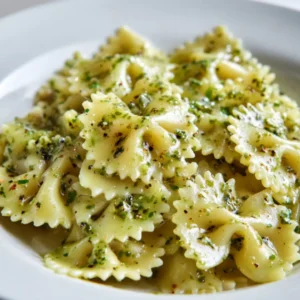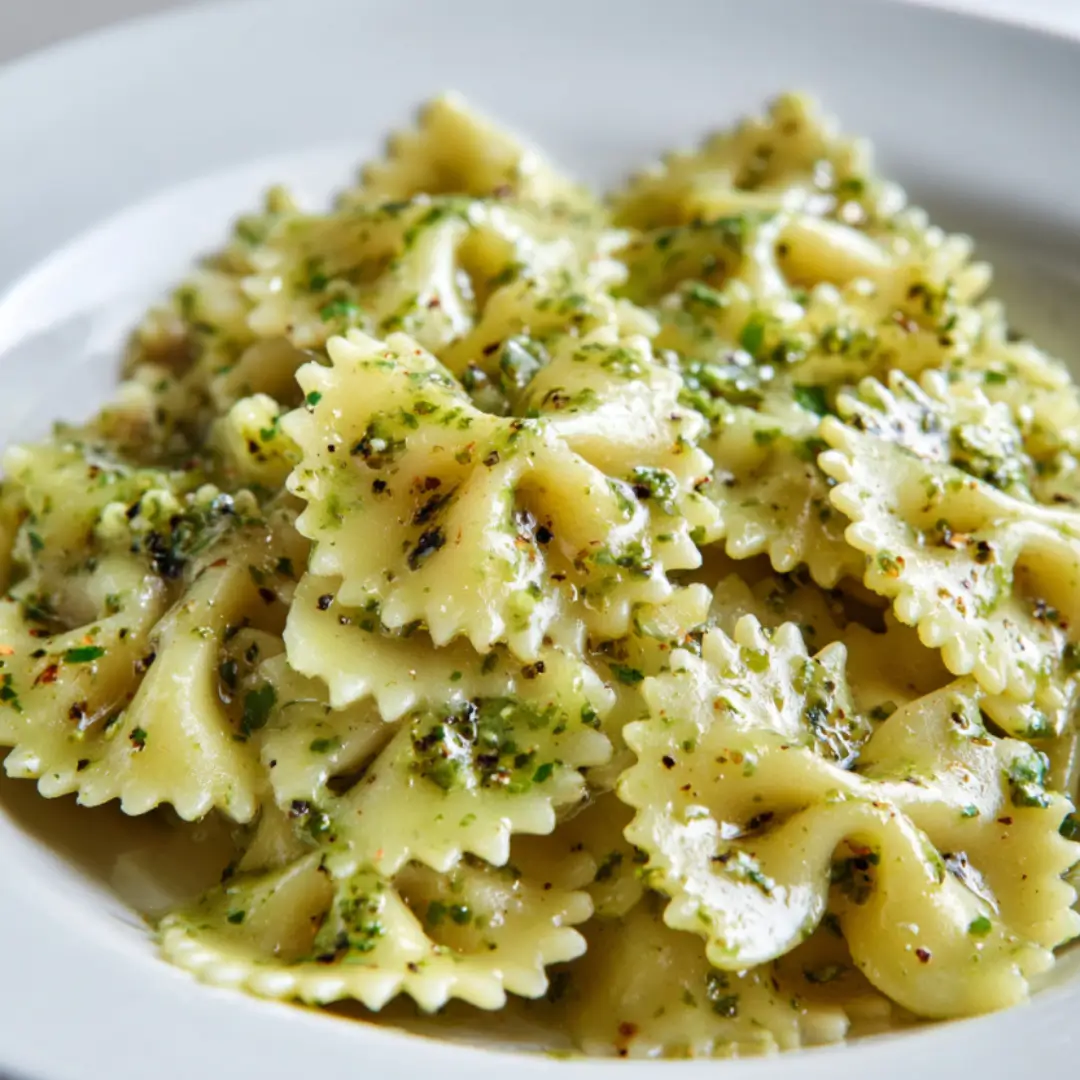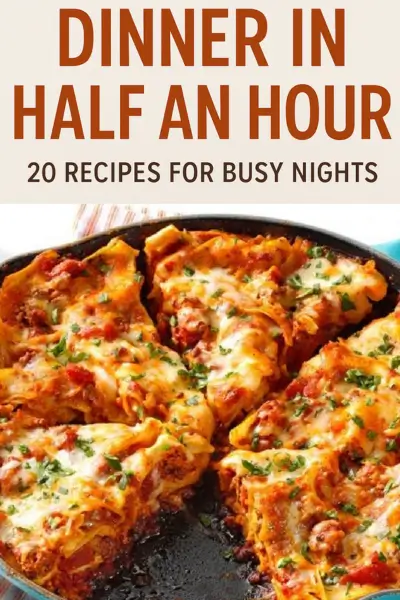Pesto pasta is an easy and tasty meal you can make in just 20 minutes. It combines a creamy sauce made from basil and garlic with your favorite pasta. You don’t need many ingredients or much time, but it still tastes fresh and delicious. This recipe is perfect for a quick dinner or when you want something satisfying without a lot of work.
Why We Love This Pesto Pasta Recipe
This pesto pasta recipe stands out for so many good reasons. First off, it’s incredibly fast to make. You can go from a bare kitchen counter to a steaming plate of creamy pesto pasta in less time than it takes to order delivery. That makes it ideal for those nights when you’re hungry but don’t want to spend an hour cooking.
Then there’s the flavor. The combination of basil pesto and cream creates a silky, savory sauce that hugs each noodle. It’s herby, a little garlicky, and perfectly balanced with a subtle richness from the cream. You get a sauce that feels indulgent without being heavy.
We also love how versatile this recipe is. It works with spaghetti, penne, fusilli—whatever pasta you’ve got on hand. And if you want to dress it up, you’ve got plenty of options. Add-ins like grilled chicken, roasted vegetables, or sautéed mushrooms can easily turn this into a full meal. Plus, it’s a dish that even picky eaters tend to love. Simple ingredients, classic flavors, and a creamy texture—what’s not to love?
Ingredients about Pesto Pasta
The ingredients for this pesto pasta are refreshingly simple, which is one reason the dish comes together so quickly. You only need a handful of pantry and fridge staples to build this rich, creamy sauce.
- 1 cup of basic basil pesto (homemade or store-bought)
- 2 tablespoons extra virgin olive oil
- 1/4 cup heavy cream
- Salt and pepper to taste
- 1 pound of your favorite pasta, cooked
How to Make Pesto Pasta Directions
Making pesto pasta is one of the easiest ways to put together a delicious meal without stress. You don’t need fancy tools or hours of prep time. Just a single skillet and a pot for boiling pasta will do the trick.
Start by cooking your pasta according to the package directions. You want it al dente—tender but still firm when you bite into it. Don’t forget to save a cup of the pasta water before you drain it. That starchy water is your secret weapon for creating a smooth, restaurant-style sauce later.
Now let’s move on to the sauce. In a large skillet or pan, pour in two tablespoons of extra virgin olive oil and set the heat to medium. Once the oil is warm (but not smoking), add your cup of basil pesto. Stir the pesto into the oil gently. This helps to release the aroma of the basil and garlic, giving the sauce a deeper flavor. Keep stirring every few seconds so it doesn’t stick or burn.
As the pesto warms up and starts to bubble slightly, it’s time to pour in the heavy cream. Do this slowly while continuing to stir. The cream blends with the pesto to form a light, creamy texture that clings beautifully to pasta. You can add more cream if you like your sauce extra rich, or keep it light with just a quarter cup.
At this point, check the texture. If the sauce looks too thick, this is where your reserved pasta water comes in. Add a splash at a time while stirring, until the sauce reaches the smoothness you like. It should be silky enough to coat the pasta evenly without being watery.
Lower the heat to avoid overcooking the sauce, and give it a final taste. Add salt and pepper as needed. Some pesto sauces are already well-seasoned, so go easy and taste before you add more.
Finally, add your cooked pasta to the skillet and toss it well until every noodle is coated in that gorgeous green sauce. Serve it warm, straight from the pan.
How to Serve Pesto Pasta
You can serve pesto pasta in many ways, depending on what you’re in the mood for. If you’re looking for something light, simply plate it up as is and maybe sprinkle a little grated cheese on top. Parmesan or a dairy-free alternative adds a lovely sharp contrast to the creamy pesto.
If you want to turn it into a full meal, there are plenty of easy options. Grilled chicken is a classic match with pesto—it adds protein and makes the dish more filling. If you prefer seafood, shrimp or even seared scallops, bring a subtle sweetness that works perfectly with the herby sauce.
Vegetables are another great way to bulk up this meal. You can stir in sautéed mushrooms, cherry tomatoes, steamed broccoli, or even peas. Just make sure they’re cooked before adding them to the pasta so everything blends well and keeps its texture.
For presentation, you can serve pesto pasta in a shallow bowl with a few fresh basil leaves on top. A drizzle of olive oil or a squeeze of lemon over the top can also brighten the flavor.
Expert Tips: Pesto Pasta
- Use fresh pesto when possible. Homemade pesto made from fresh basil, garlic, olive oil, and nuts tastes brighter and more vibrant than most store-bought options. But if you’re short on time, a good quality jarred pesto will still work beautifully.
- Save that pasta water. Adding starchy pasta water helps your sauce stick to the noodles better and gives you more control over the final texture.
- Add the cream slowly. Streaming in the cream while stirring prevents it from separating and helps it blend smoothly into the sauce.
- Keep the heat low once the cream is added. High heat can cause the sauce to split. Gentle heat ensures it stays creamy and cohesive.
- Finish with a topping. A sprinkle of toasted pine nuts, shredded cheese, or even lemon zest adds texture and flavor to the finished dish.
These tips help you create the best possible version of this dish every time. Even small changes can have a big impact on flavor and texture.
How to Store Pesto Pasta
If you have leftovers, you’ll be happy to know that pesto pasta stores well. First, let it cool to room temperature. Then transfer it into an airtight container. You can keep it in the refrigerator for up to 3 days.
When reheating, it’s best to do so gently. Pour a little bit of water or cream into the pasta to loosen the sauce before warming it up in a pan over medium heat. Avoid microwaving on high, as that can cause the sauce to become greasy or separate. A low heat helps it return to that smooth, creamy texture.
You can also freeze pesto pasta, but keep in mind that the cream in the sauce may change texture once thawed. If you do freeze it, store it in a freezer-safe container and use it within one month. Thaw in the fridge overnight before reheating.
Variation of Pesto Pasta
This recipe is incredibly flexible, so don’t be afraid to make it your own. Here are a few tasty variations you can try the next time you’re in the mood for a twist:
- Add protein: Stir in grilled chicken, sautéed shrimp, or even shredded rotisserie-style poultry for a heartier version.
- Go green: Add a handful of spinach or kale to your sauce for extra nutrients and a deeper green color.
- Switch the pesto: Try sun-dried tomato pesto, arugula pesto, or even a walnut pesto for different flavor profiles.
- Use a different pasta: While spaghetti or penne are great, fusilli or farfalle work just as well and hold the sauce nicely.
- Make it dairy-free: Swap the cream for a plant-based alternative like cashew cream or coconut cream if you’re avoiding dairy.
- Boost the crunch: Top with toasted breadcrumbs or nuts just before serving to add texture.
With these ideas, you can enjoy a different version of pesto pasta every week without it ever getting boring.
FAQ
Can I make pesto pasta ahead of time?
Yes, you can prepare the sauce and pasta separately ahead of time. Store them in the fridge and combine just before serving for the best texture.
What kind of pasta works best for pesto pasta?
Any kind works! Long noodles like spaghetti or linguine, or short ones like penne and rotini. Just go with what you like or have on hand.
Can I use store-bought pesto?
Absolutely. Just choose a good-quality brand with simple ingredients. Homemade will give you a fresher flavor, but jarred pesto is a great time-saver.
How do I keep pesto pasta from drying out?
Save some pasta water and use it to loosen the sauce before serving. A drizzle of olive oil can also help maintain moisture.
Is pesto pasta healthy?
It can be, especially if you use whole grain pasta and add vegetables. The ingredients in pesto—like basil, garlic, and olive oil—offer some health benefits, too.
Can I make pesto pasta without cream?
Yes! You can skip the cream altogether or use a dairy-free alternative. The pasta water alone can help create a light, flavorful sauce.

Pesto Pasta Recipe
Equipment
- Large Pot
- Large Skillet
Ingredients
- 1 cup basil pesto (homemade or store-bought)
- 2 tablespoons extra virgin olive oil
- 1/4 cup heavy cream
- Salt and pepper to taste
- 1 pound pasta (cooked)
Instructions
- Cook pasta according to package directions until al dente. Reserve 1 cup of pasta water before draining.
- In a large skillet, heat olive oil over medium heat. Add basil pesto and stir gently to warm.
- Slowly pour in the heavy cream while stirring to combine until smooth.
- If the sauce is too thick, add reserved pasta water a little at a time until desired consistency is reached.
- Lower the heat and season with salt and pepper to taste.
- Add the cooked pasta to the skillet and toss until evenly coated with the sauce. Serve warm.
Send me this recipe!
Just enter your email below and get it sent straight to your inbox!


